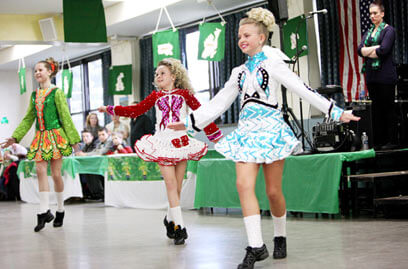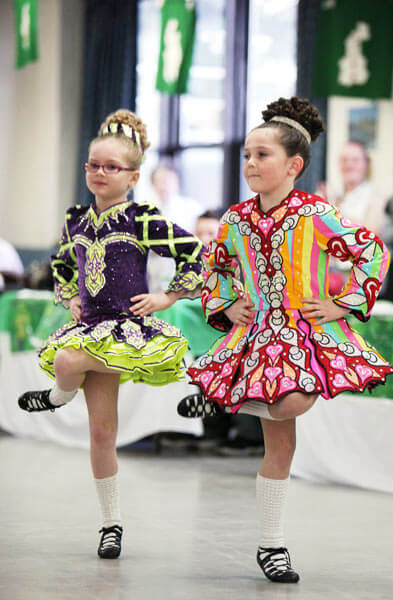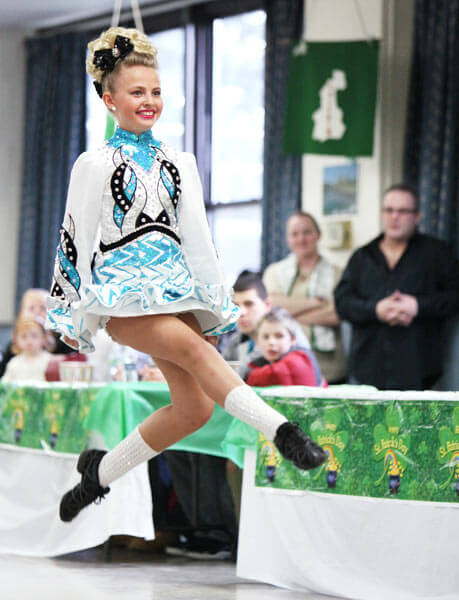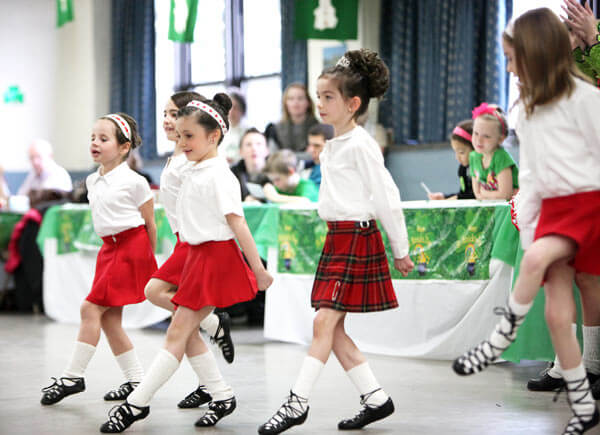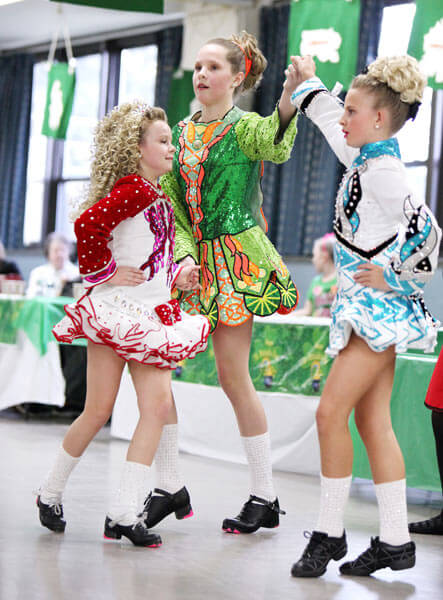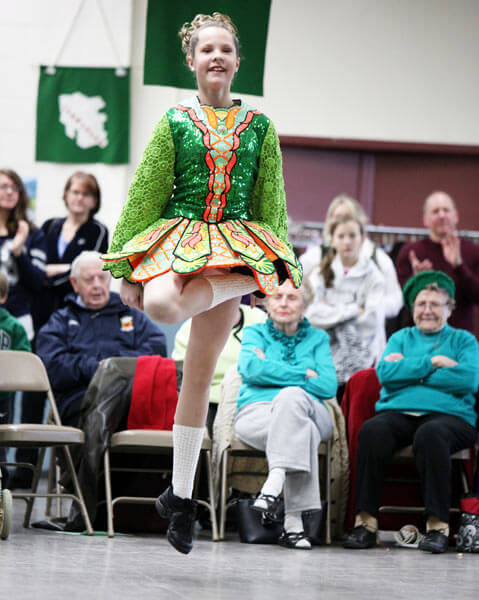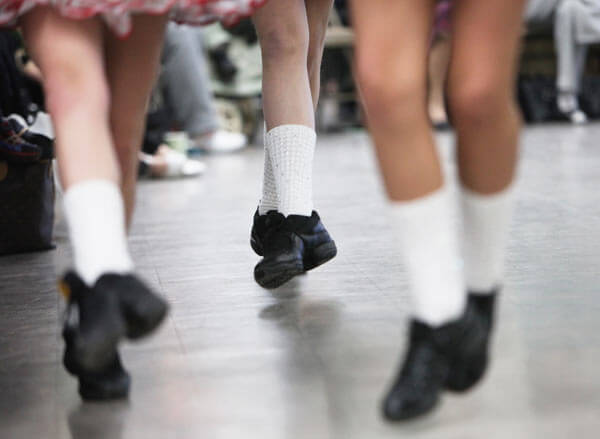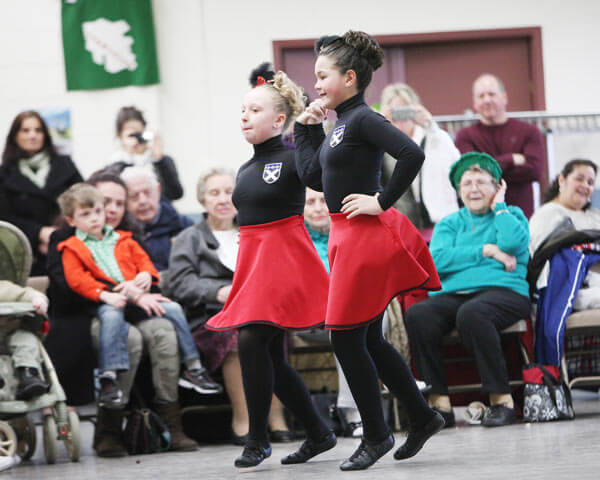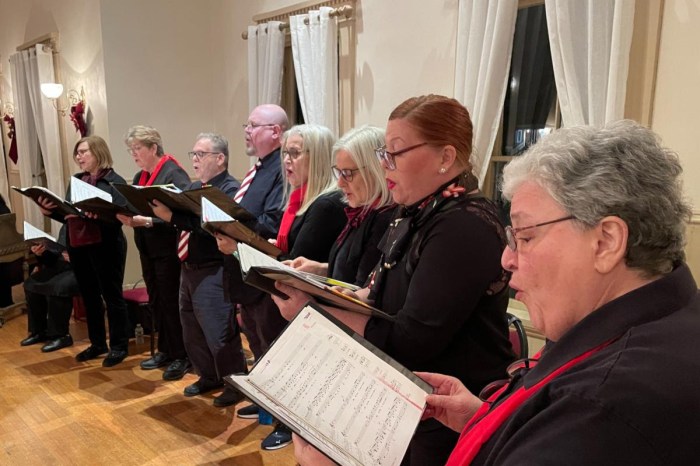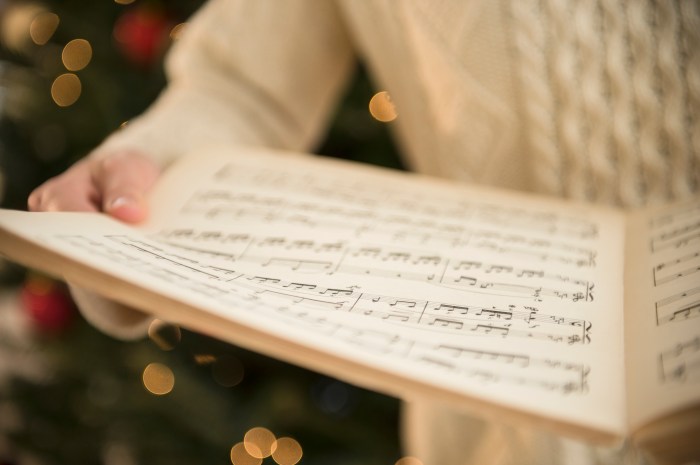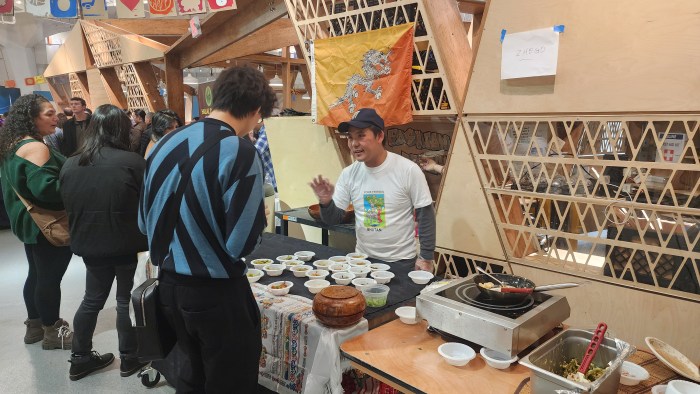By Olivia Saperstein
Many may have “Riverdance” or “Lord of the Dance” in their minds when asked to think about Irish dancing, but jigs and reels can be found much closer to home.
And with St. Patrick’s Day on the horizon, Kelly Fitzgerald founder of the Fitzpatrick Academy of Irish Dance in Whitestone is busy getting her dancers ready for many performances to showcase her students’ step dancing skills.
The 25-year-old, who started Irish dancing at age 3, opened her academy three years ago.
Students are age 4 and older and are welcome to dance either recreationally or competitively. To Fitzpatrick’s credit, enrollment has steadily increased each year and the school is starting to gain recognition.
While it can be hard to balance a multitude of dancers with different goals, Fitzpatrick loves the challenge.
“I would say that my greatest obstacle as an Irish dance instructor would be working with a variety of ages and personalities, and adjusting my teaching style to suit the needs of each and every individual student,” she said. “Every class is different and always unpredictable. But that’s what I love about it.“
Fitzpatrick’s passion for this type of dance has been drawn from a childhood that encouraged artistic expression and cultural immersion, as she traveled to England and Ireland twice or three times a year. There she found herself enthralled with the intricate foot movements and history.
She said that what makes Irish dancing unique is its heavy focus on foot work. Dancers keep their arms by their sides, which was initially a form of protest against English occupiers. Performances are done solo or as a Ceili – a group that dances as one.
Traditional Irish music accompanies the dancers, and each type of melody is paired with a particular step. If a jig is performed, a jig tune is played.
What may be quite attention grabbing to some is the attire. The skirts of competitive dancers’ costumes are often adorned with four front panels featuring Celtic embroidery.
Fitzpatrick said that as the dance has become more modernized, outfits have evolved with bolder prints.
“We use tons of rhinestones now,” she said, “which is really great for the stage.”
And most striking is the girls’ hairpieces, which often resemble giant, curly wigs. However, this choice goes beyond the aesthetic.
“When they aren’t using their hands, the hair adds a little more life. So from head to toe, you’ve got a lot of energy,” Fitzpatrick said.
She also pointed to how step dancing keeps children active and helps them make lifelong friendships; it is after all, how she developed most of hers. Classes promote team work and courage, enabling students to gain experience in front of large audiences. They also teach children to learn how to balance the demands of a busy schedule.
”I have learned that Irish dancing helps promote time management. As busy as these children may be, if they want to dance, they find a way,” she said.
Fitzpatrick hopes to promote Irish dancing so that it will become more popular “in a way where people don’t think they have to be Irish to do it.”
The school’s students hail from a variety of backgrounds, and as they learn one of dance’s most unique forms, a centuries-old Irish tradition continues in Queens.
The school holds most of its classes at Grace Episcopal Church at 14-15 Clintonville St. in Whitestone, and Fitzpatrick can be reached at 516-404-6946.

